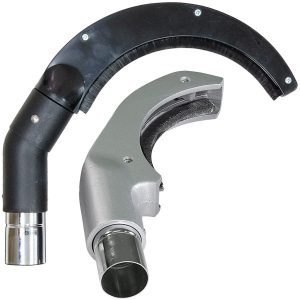Typically, when cleaning and dusting surfaces in different facilities (offices, warehouses, industrial spaces, etc.) – we clean what we can see and reach.
However, locations such as overhead pipes, fixtures, vents, raceways etc., that are hard to reach, or out-of-sight often get ignored and neglected.
Without cleaning and dusting these harder-to-reach surfaces, you risk significant long-term risks including:
- Health issues from inhaling fine dust that falls off these overhead surfaces
- Operational issues when dust collects on equipment
- Spaces become harder to clean due to dirt “caking on” over time if not cleaned regularly.
That’s why regular overhead cleaning is so critical to the maintenance of any space. Here are some tips and recommendations for you to consider when it comes to overhead cleaning:
Here are 3 things you should know before you start overhead cleaning…
#1 Consider the HEIGHT of the space:
The height of the surfaces you plan to clean will vary, and will determine how you access those surfaces.
Here is a RULE OF THUMB:
- Surfaces that are up to 18 feet high may be accessible from the floor by using extension wands and poles. (The higher you go, the more difficult it is to clean)
If you are trying to clean surfaces that are higher than 18 feet, it’s best to use scaffolding or a scissor-lift to ensure you can reach these overhead surfaces and carry out the work safely.
#2 The type of SURFACE you are cleaning:
There are a variety of surfaces that are located overhead that may need regular cleaning. These include:
- Sills and ledges
- Overhead raceways (For data and electrical cables)
- Pipes and ducts (For HVAC and plumbing)
- Fixtures and equipment (i.e. heaters, pot lights, fans, vents, etc.)
The types of surfaces you are planning to clean will then inform the types of tools you’ll need to use.
#3 The type of VACUUM CLEANER you should use:
In the case of removing fine dust from overhead spaces, vacuum cleaners will be most effective. However, the type of vacuum cleaner you choose to use is important.
Generally, you’ll want to follow these standards:
- The vacuum cleaner should have GOOD SUCTION (at least 100 CFM)
- The vacuum cleaner should have GOOD FILTRATION in order to trap the very fine dust that the vacuum cleaner is sucking up.
Let’s now look at all the tools you could consider for overhead dusting.
Types of Tools for overhead dusting:
 TOOLS FOR SILLS, LEDGES, OR RACEWAYS:
TOOLS FOR SILLS, LEDGES, OR RACEWAYS:
- Curved extension wands / elbows (45 / 90 / 130 degrees)
- Weighted brushes (either round, or wide)
TOOLS FOR VENTS:
- Extension wand (straight or curved)
- Crevice tool
- Round or wide brush (for vents covered by mesh)
- Extension wand
- Pipe tools (the size would be based on the diameter of the pipe)
 TOOLS FOR FIXTURES & EQUIPMENT:
TOOLS FOR FIXTURES & EQUIPMENT:
- Extension wand
- Brushes (either plastic, or weighted)
*A NOTE ON EXTENSION POLES / WANDS:
There are 2 primary types of extension wands you could use –
- Aluminum wands: These are a little heavier, less expensive, and good for spaces up to 18 feet high
- Fiberglass wands: These are lighter, more expensive, and can reach spaces up to 25 feet high
For anyone interested in understanding overhead cleaning or high dusting, it’s important to consider and account for all the things mentioned above so that you can:
- Properly BUDGET your time and provide better QUOTES to your customers
- Maintain SAFE work practices
- Build a TOOL KIT that will let you complete jobs efficiently and effectively
